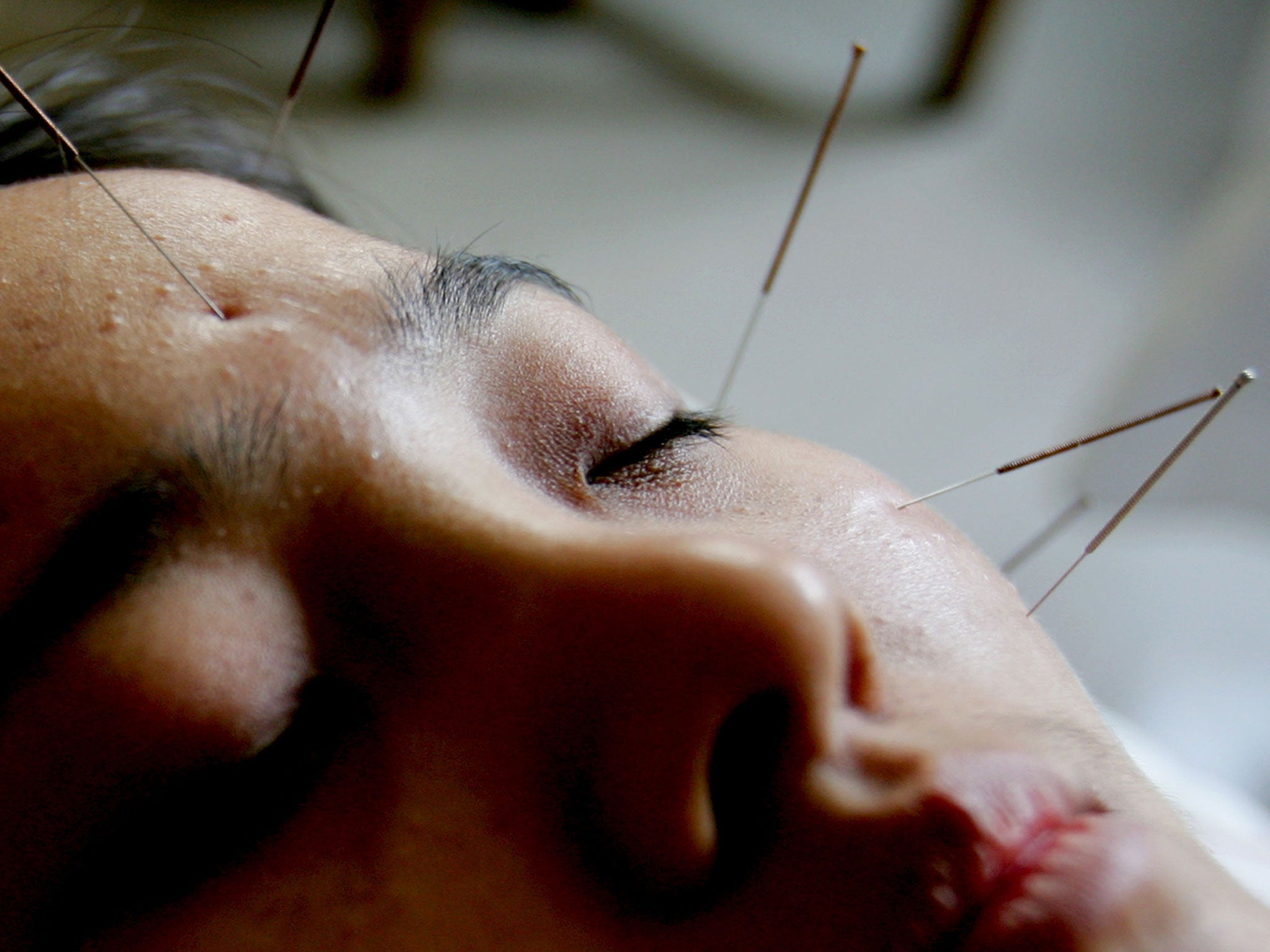Acupuncture for lower back pain no more effective than 'sham treatment'
Nice as revised its guidelines on managing early back pain

Your support helps us to tell the story
From reproductive rights to climate change to Big Tech, The Independent is on the ground when the story is developing. Whether it's investigating the financials of Elon Musk's pro-Trump PAC or producing our latest documentary, 'The A Word', which shines a light on the American women fighting for reproductive rights, we know how important it is to parse out the facts from the messaging.
At such a critical moment in US history, we need reporters on the ground. Your donation allows us to keep sending journalists to speak to both sides of the story.
The Independent is trusted by Americans across the entire political spectrum. And unlike many other quality news outlets, we choose not to lock Americans out of our reporting and analysis with paywalls. We believe quality journalism should be available to everyone, paid for by those who can afford it.
Your support makes all the difference.Health officials no longer recommend using acupuncture to manage lower back pain, having described the technique as "no better than a sham treatment."
The National Institute for Health and Care Excellence (Nice) has concluded that there is insufficient evidence to prove that acupuncture is effective, following a review into guidance on dealing with lower back pain.
The new recommendations state that massage and manipulation by physiotherapists should only be used alongside physical activity, and stress that sufferers should exercise.
Experts added that anti-inflammatories which do not contain steroids, such ibuprofen or aspirin, should be used to manage lower back pain. Weak opioids, including codeine, are now only recommended for use by those with acute pain.
The draft recommendations, which update guidance from 2009, have been published for consultation.
Professor Mark Baker, clinical practice director for Nice, said: “Regrettably there is a lack of convincing evidence of effectiveness for some widely-used treatments. For example, acupuncture is no longer recommended for managing low back pain with or without sciatica. This is because there is not enough evidence to show that it is more effective than sham treatment.
"Our aim with this draft guideline is to give clarity and set out the most clinical and cost effective ways to treat low back pain and sciatica based on the best available evidence. We now want to hear from all those who provide care for people with these conditions in the NHS, as well as from people with the conditions and their carers, to ensure all relevant views are considered for the final guideline.”
Edzard Ernst, emeritus professor of complementary medicine at the Peninsula School of Medicine, University of Exeter, praised the new advice, and told The Guardian that previous guidelines were “seriously out of touch with the reliable evidence”.
Dr Mike Cummings, medical director of the British Medical Acupuncture Society said he was “disappointed” by the revised guidelines and said that the technique should be used “as much as possible.”
Join our commenting forum
Join thought-provoking conversations, follow other Independent readers and see their replies
Comments